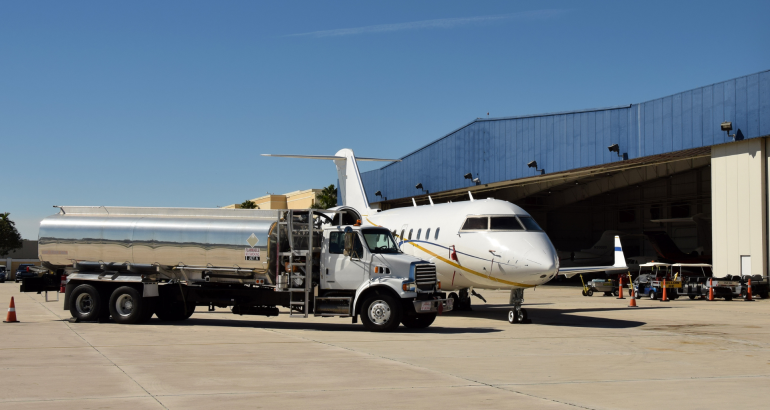In the world of aviation, efficiency is key. Every pilot and aircraft operator strives to maximize fuel efficiency, not only to reduce costs but also to minimize environmental impact. A crucial aspect of achieving this efficiency lies in meticulous flight planning.
From optimizing routes to considering weather conditions and implementing cutting-edge technologies, there are numerous strategies to enhance fuel efficiency and elevate the overall flight experience.
In this comprehensive guide, we delve into the realm of optimal flight planning, unveiling a treasure trove of tips and techniques to help pilots and operators unlock the full potential of their aircraft while minimizing fuel consumption. Prepare to embark on a journey that will revolutionize the way you approach flight planning and propel you towards a greener, more cost-effective future.
The Art of Route Optimization:
One of the fundamental pillars of fuel-efficient flight planning is route optimization. By carefully selecting the most direct and optimal route, pilots can significantly reduce fuel consumption. Advanced flight planning software and tools, combined with real-time weather updates, allow for precise route calculations that consider factors such as wind patterns, air traffic congestion, and airspace restrictions.
Additionally, strategic altitude selection based on wind patterns and temperature differentials can further enhance fuel efficiency. We explore these concepts in-depth, providing practical insights and highlighting the benefits of leveraging technology to streamline route planning processes.
Weather Matters, Harnessing Meteorological Insights:
Weather conditions play a vital role in flight planning and fuel efficiency. Pilots must stay informed about current and forecasted weather patterns along their intended route. This knowledge enables them to make informed decisions regarding altitude changes, route diversions, or speed adjustments to optimize fuel consumption.
We delve into the significance of weather planning, discussing key elements such as turbulence avoidance, tailwind utilization, and the utilization of weather radar systems. By leveraging meteorological insights and incorporating them into flight planning, pilots can navigate safely and efficiently, ensuring a smooth journey for passengers and minimizing fuel wastage.
Weight and Balance: Fine-Tuning Efficiency:
An often overlooked aspect of fuel efficiency is maintaining an optimal weight and balance configuration for the aircraft. Carrying excess weight translates into increased fuel consumption. Proper weight distribution and meticulous load planning are crucial to achieving maximum efficiency.
We delve into strategies for minimizing unnecessary weight, such as optimizing passenger and cargo loads, fuel management techniques, and adopting lightweight materials where possible. By prioritizing weight reduction and ensuring a balanced aircraft, operators can witness significant fuel savings without compromising safety or passenger comfort.
Technology: Empowering Fuel-Saving Innovations:
The aviation industry continues to evolve with groundbreaking technological advancements that revolutionize fuel efficiency. From advanced flight management systems to state-of-the-art navigation tools, modern aircraft are equipped with an array of cutting-edge technologies that optimize fuel consumption.
We explore notable innovations, including performance-based navigation (PBN) procedures, continuous descent approaches (CDA), and advanced engine management systems. By embracing these technologies and staying abreast of the latest advancements, operators can unleash the full potential of their aircraft and pave the way for a greener and more sustainable future.
The Human Element: Training and Awareness :
Fuel efficiency is not solely dependent on technology and planning tools; it also relies on the expertise and awareness of the flight crew. We highlight the importance of ongoing training programs that focus on fuel-saving techniques, such as efficient taxiing, optimized climb and descent profiles, and optimal throttle management.
Additionally, fostering a culture of fuel efficiency within an organization encourages all stakeholders to play an active role in reducing environmental impact. By cultivating a mindset of sustainability and providing continuous education, aviation professionals can contribute to a more fuel-efficient industry.
Conclusion:
In the pursuit of maximizing fuel efficiency, optimal flight planning takes center stage. By employing route optimization strategies, leveraging meteorological insights, fine-tuning weight and balance configurations, embracing technological innovations, and nurturing a culture of awareness, pilots and operators can unlock remarkable fuel savings without compromising safety or performance.
The journey towards fuel efficiency is not only a financial imperative but also an environmental responsibility. Let us embark on this transformative voyage together, where every flight becomes an opportunity to soar towards a more sustainable and cost-effective future.
Remember, by prioritizing fuel efficiency, we elevate the aviation industry to new heights while minimizing our impact on the environment.
Fly smarter, fly greener, and embrace the power of optimal flight planning.
